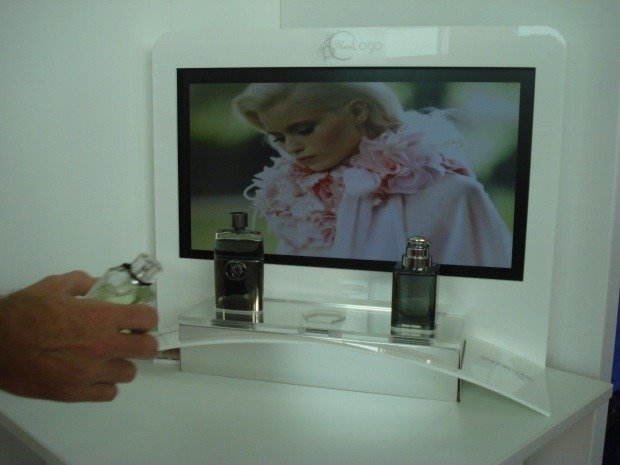Intevi, a new digital signage company, is developing off-the-shelf solutions for today’s demanding retail market. Adam Wilson, co-founder and director of Intevi, talked to Output about the company’s new Interactive Retail Unit (iRU).
Seven months ago Wilson, formerly of dZine and AMX, started Intevi looking to provide end-to-end digital media solutions. Intevi’s iRU software allows digital signage screens to react to what is happening in shops, particularly where customers are encouraged to touch and feel products in an interactive way.
“The software is based on our Intevi Digital Poster solution which is a traditional digital signage product,” explains Wilson. “The content played can be managed in the cloud or it can be stored locally, or even a mixture of both. Our software also allows the media owner to schedule content changes in line with seasons, product releases, and so on, over the internet or via encrypted USB dongles.”
With this solution retailers are able to display an attractor content loop to engage dynamically with its customers. Once the customer approaches the display and a product is lifted from the shelf, a video specific to this product is triggered. So, for instance, if the shelf has female-orientated perfumes and male-targeted aftershaves, a suitable video will be displayed depending on the target gender of the product that the customer picks up.
“We first developed this solution for a couple of clients, and now it is an off-the-shelf product offering at Intevi,” says Wilson. “We have designed a physical interactive module, which allows for the various triggers to be connected and programmed accordingly. The interactive module communicates with the screen and stores the content ready to be played back.”
The content displayed can be triggered via a range of methods: product pick-up; pressure sensor; motion sensor; push buttons; gesture; or using analytical cameras which can determine the age and gender of the person in front of the screen. The content activated is specific to the action performed.
“Retailers are stepping up to the fact that consumers are more knowledgeable and tech savvy than ever before. Standard, non-interactive digital screens are seen by some retailers as old news and we are constantly investigating the latest solutions for our digital retail customers,” adds Wilson.
But the most interesting feature of this software is that it can provide retailers with real data on what products are most successful and which ones aren’t. They can then draw sales statistics and fine-tune their next order, change the location of the product and use the digital media displays for more insightful knowledge.
“Our system collates all information about what products were picked up, by whom, when, how many times. This is then cross-referenced with sales data to see what products where actually purchased,” concludes Wilson.
Screens are no longer just ‘moving picture decoration’ – they are real retail tools for information for the customer and the retailer. Retailers can improve products sales and get their numbers on the ROI from the screens.
